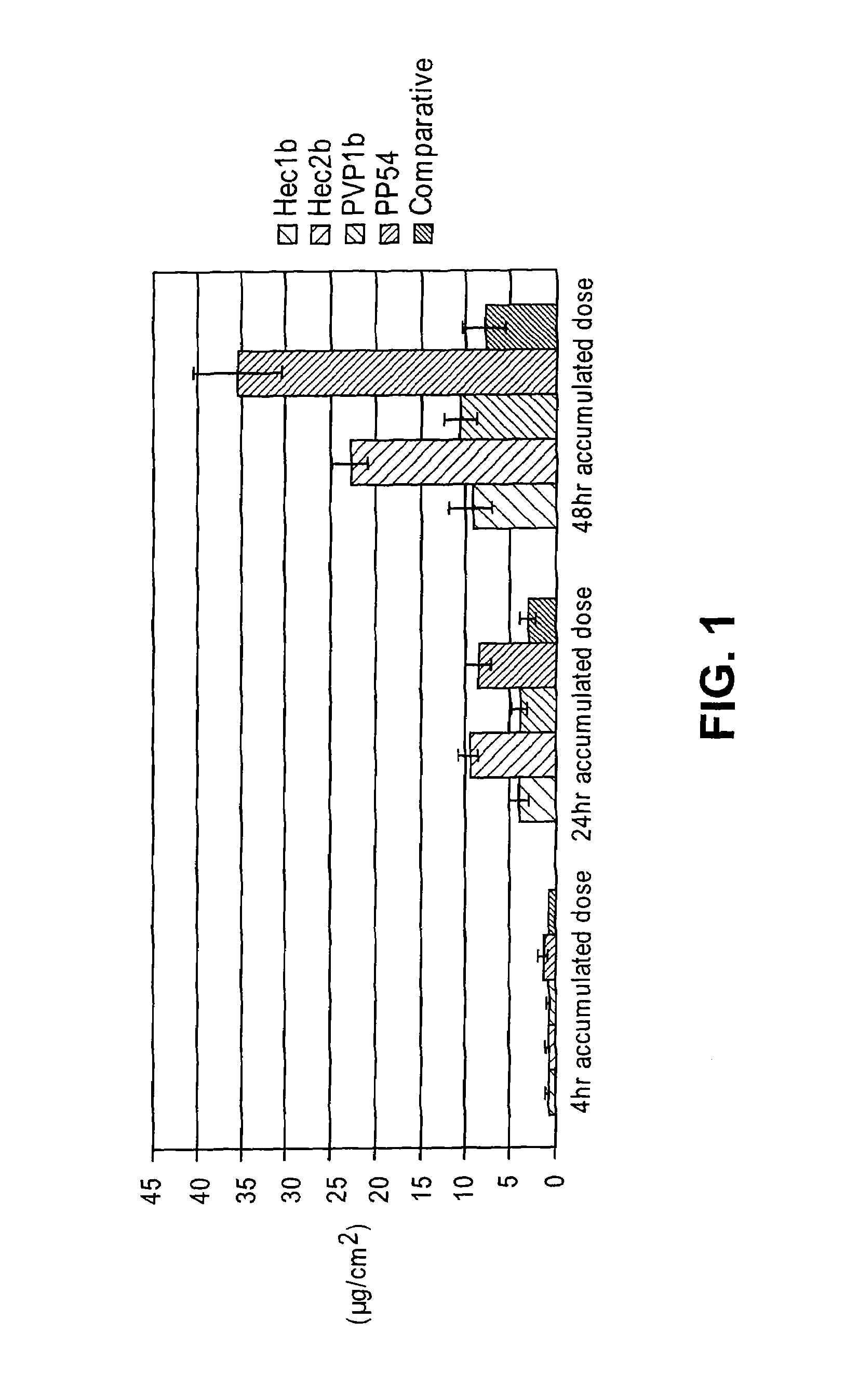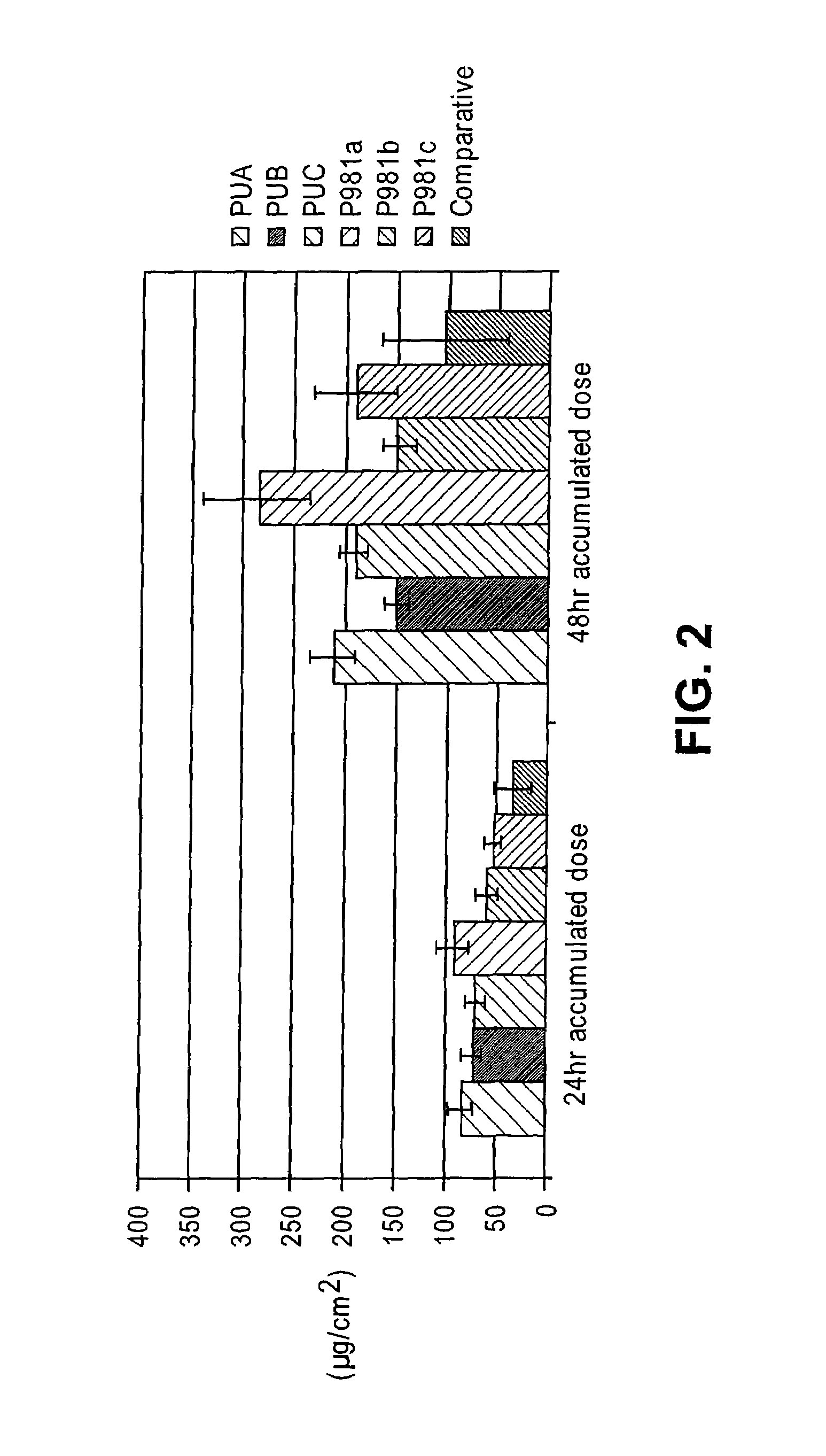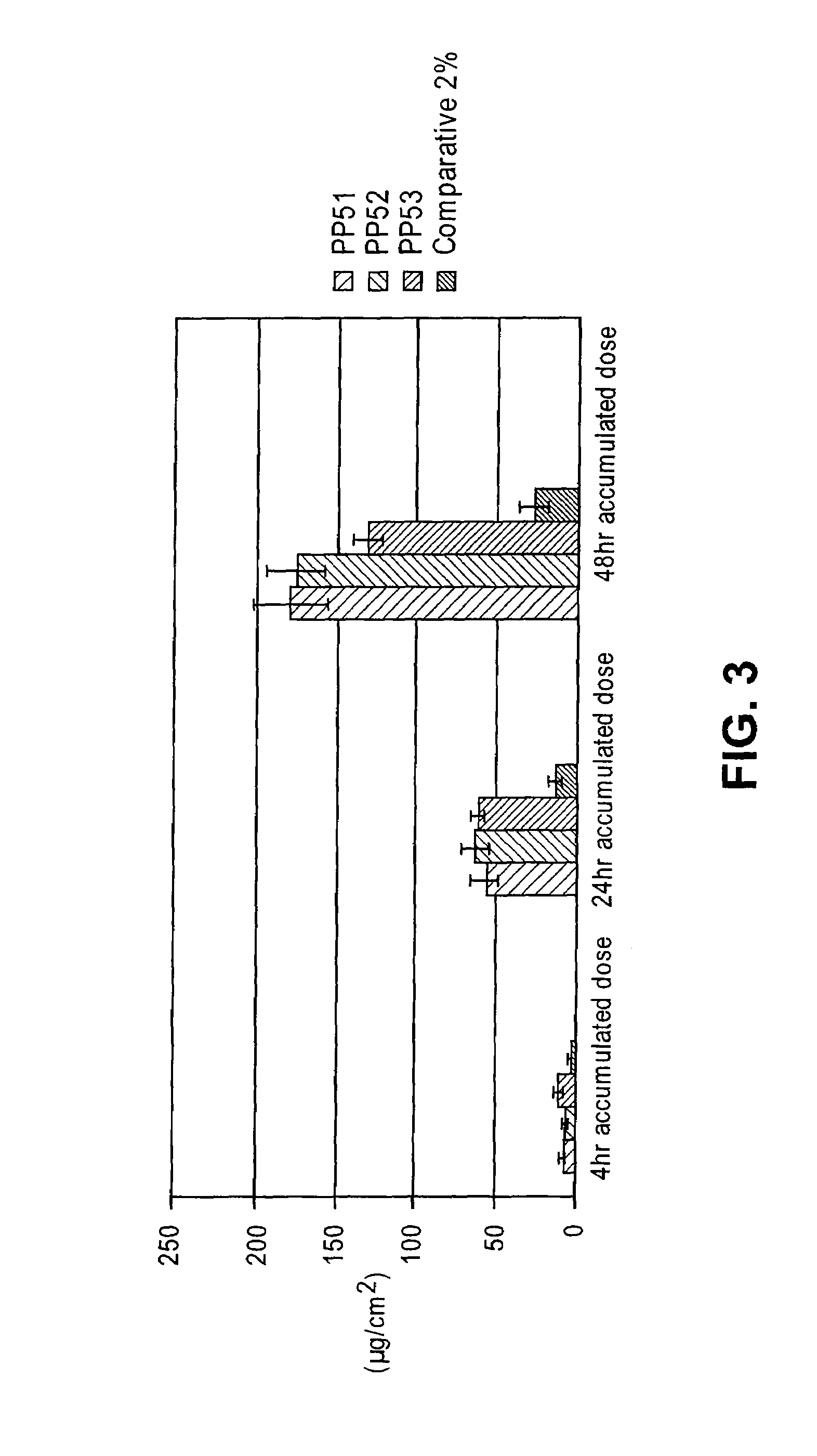Diclofenac topical formulation
a technology of diclofenac and topical formulation, which is applied in the direction of application, peptide/protein ingredients, drug compositions, etc., can solve the problems of joint pain, major financial burden on the health care system, and impaired movement, and achieves improved mobility, improved transdermal flux, and improved drying time
- Summary
- Abstract
- Description
- Claims
- Application Information
AI Technical Summary
Benefits of technology
Problems solved by technology
Method used
Image
Examples
example 1
Materials and Methods
[0121]Table 1 provides a list of the materials used in the examples provided below:
[0122]
TABLE 1MaterialsAbbrChemicalFWSourceVendor #CASBHAButylated 180.24SigmaB125325013-16-5hydroxy-anisoleBHTButylated 220.36SpectrumBH110-07128-37-0hydroxy-tolueneCarb940Carbopol 940NoveonCarbopol 9003-01-4940Carb971Carbopol 971NoveonCarbopol 9003-01-4971Carb974Carbopol 974NoveonCarbopol 9003-01-4974Carb981Carbopol 981NoveonCarbopol 9003-01-4981Carb1342Carbopol NoveonCarbopol 9003-01-413421342DicloDiclofenac 318.1Labochim15307-79-6SodiumDMSODimethyl 78.1GaylordEM-295167-68-5Sulfoxide (USP)EDTADisodium VWRMK1395046381-92-6Ethylene-diamine-tetraacetateDihydrateEtOHEthanol 46.1SpectrumG101564-17-5(USP)GlyGlycerin 92.1Proctor &Superol V56-81-5(USP)GambleGuarGuar gumSpectrumG10449000-30-0HECHydroxy-HerculesNatrasol 9004-62-0ethyl 250 Mcellulose - Natrasol 250 MHPMCHydroxy-Dow Methocel 9004-65-3propylChemicalE4Mmethyl celluloseHY117Hydrox-95,000SpectrumHY1179004-64-2propyl celluloseHY...
example 2
Gel Formulations Using Various Thickeners in a Comparative Liquid Formulation Base Solution
[0129]Initially, several thickeners including carbomers, polyvinyl pyrrolidone, locust gum, cellulose polymers and polyvinyl alcohol were tested for their effectiveness at forming a diclofenac sodium gel using the comparative liquid formulation as a base solution. In the gel formulations of this Example, a comparative liquid formulation solution was produced and a thickener was then added directly to this base. In order to facilitate the incorporation of the thickener, sonication and heating (at 60° C.), along with vigorous vortexing / homogenization were performed.
[0130]Some thickeners, specifically guar gum, locust bean gum, methocel (HPMC), polyvinyl alcohol, and poloxamer 407 failed to form stable gels. In particular, immediate separation, inefficient thickening, and insolubility of the thickeners was noted. Gels were formed that showed initial stability with several cellulose polymers inclu...
example 4
Comparative Data on Transdermal Flux of Various Diclofenac Gels
[0155]Studies were performed to determine the relative transdermal flux of the diclofenac gel formulations of the present invention when compared with previously disclosed formulations, such as the diclofenac diethylamine gel formulation described by Baboota (Baboota et al., Methods Find. Exp. Clin. Pharmacol., 28: 109-114 (2006)). Accordingly, the Franz cell procedure described above was used to compare flux rates of three of the diclofenac formulations described by Baboota with a gel vehicle of the present invention. The diethylamine form of diclofenac was used as the active agent, as that is the form used by Baboota. The exact compositions of the formulations used in this study are shown in Table 11 below. The Baboota formulations are labeled FY1, FY2, and FY3, while a gel formulation using the vehicle of the present invention with diclofenac diethylamine as the active is labeled G14 / 2_m. A comparative liquid formulat...
PUM
| Property | Measurement | Unit |
|---|---|---|
| viscosity | aaaaa | aaaaa |
| viscosity | aaaaa | aaaaa |
| time | aaaaa | aaaaa |
Abstract
Description
Claims
Application Information
 Login to View More
Login to View More - R&D
- Intellectual Property
- Life Sciences
- Materials
- Tech Scout
- Unparalleled Data Quality
- Higher Quality Content
- 60% Fewer Hallucinations
Browse by: Latest US Patents, China's latest patents, Technical Efficacy Thesaurus, Application Domain, Technology Topic, Popular Technical Reports.
© 2025 PatSnap. All rights reserved.Legal|Privacy policy|Modern Slavery Act Transparency Statement|Sitemap|About US| Contact US: help@patsnap.com



